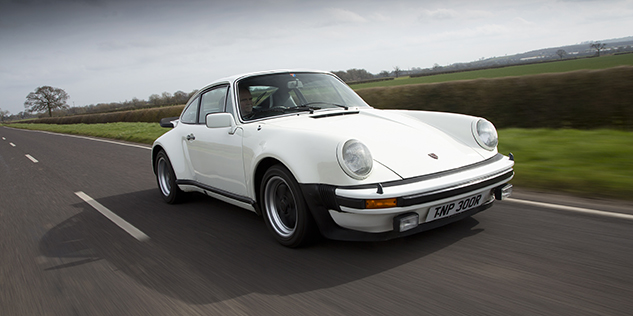
Welcome to the 930 Register
The 930 Register covers all variants of the original 911 Turbo built between 1974 and 1989. Type 930 was the internal factory designation for the model.
The 3.0 litre 911 Turbo was developed primarily for homologation purposes. Following the competition success that Porsche had been having with the normally aspirated 2.7RS and 2.8RSR models, and utilising the knowledge of turbocharging that they had gained with the CanAm 917s, Porsche built a 911 RSR turbo which very nearly won at Le Mans first time out. (Failure of fifth gear prevented that chance of victory, which is partly why, for all but the final year of production, all 930s had a 4 speed gearbox; besides which, with so much torque available, who needs 5 speeds?).
Despite having proven with the 2.7RS that there could be a massive demand for a stripped out homologation special, this time around it was decided that the 911 Turbo was going to be Porsche's flagship model in all respects, combining massive performance and reliability with a significant degree of comfort. This combination led to the motoring press acclaiming the 930 as “the first practical supercar”.
Factory production of the 911 Turbo commenced in 1974, following display the previous year of a mocked up version at the Paris Motor Show. Porsche model years run from August - July; so 1975MY 8.74 – 7.75 1976MY 8.75 – 7.76 1977MY 8.76 – 7.77.
The 3.0, 260bhp version was available in the UK for the 1975 to 1977 model years. There is some confusion as to how many 3.0 RHD 911 Turbos came to the UK, as Porsche Cars GB have given 2 different figures. For years it was accepted that the number was 36, but recently a figure of 74 has been given, which is possibly the total RHD production.
For the 1978 model year a number of significant changes took place. The capacity was increased to 3.3 litres, and this, along with the addition of an intercooler upped the power to a modest 300 BHP, with the potential for more to come. The increase in power and torque helped to offset the weight gained by the additional standard and optional equipment added to the revised model, in keeping with it's luxury status. The most obvious difference between the 3.3 and the 3.0 models is in the aerodynamic tail spoiler. On the 3.0 model it is a relatively flat, rubber lipped 'whale tail', whilst on the 3.3 model, the rubber lip edges are curved significantly upwards, leading to it being referred to as a 'tea tray' rear wing.
From the 1978MY onwards, production continued over the next decade with many small developments, and some quite significant ones – factory built slant nose 930SEs, the introduction of cabriolet and targa versions in the 1988MY, and a 5 speed gearbox for all models in the final 1989 model year. In total, under 1000 RHD 930s came to the UK market, making them one of the most desirable Porsches to own – and that “practical supercar” tag still applies today.
As well as being socially active, the Register provides valuable technical support and helpful advice for owners.
911 Turbo (930) Buyers' Guide
There are several variations of the 911 Turbo read about them here...